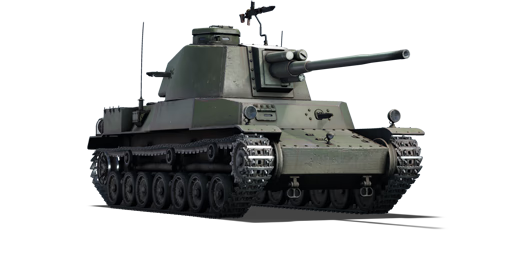The Type 4 Chi-To was developed as a counter to the ever-pressing danger the Sherman possessed over Japanese 1930s infantry based tanks such as the Ha-Go and Chi-Ha. The main development point of the Chi-To (and its heavier counterpart, the Chi-Ri II) was the new high-velocity long barrel 75 mm and a new hull design over the Chi-Ha / Chi-He family allowing for larger upgrades in armour, engine, and cannons. However, due to delays in hull production and lengthy cannon development, the Chi-To would only be ready in 1945 for evaluation, and the Chi-Nu and Ho-Ni III were built as stopgap measures to fill the gap of Sherman-capable competitors until the Chi-To was fully ready.
It was introduced along with the initial Japanese Ground Forces tree in Update 1.65 "Way of the Samurai". Playing the Type 4 Chi-To can give the player a new impression of the Japanese tree line and a lasting one considering many of the Japanese tanks after it follow the same pattern - a tank with a very powerful cannon, decent mobility, but rather fragile armour. The armour plus the tank's rather long reload means that the Chi-To is meant more for a long-distance shoot-out than a close encounter.















